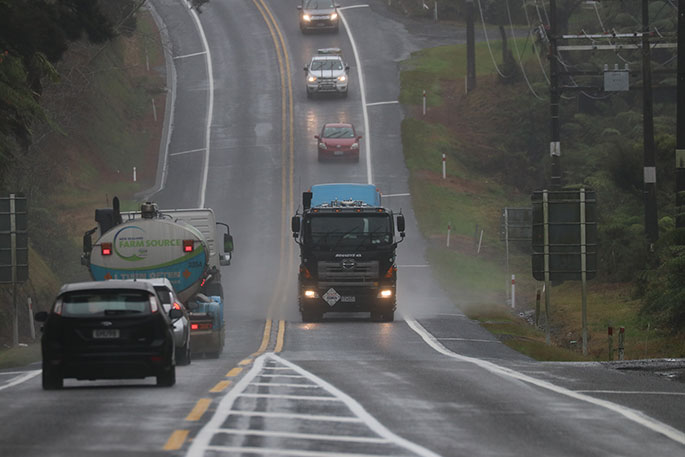Driving in the winter is very different to driving in the summer.
Additional factors such as black ice, wet weather, fog and it getting darker earlier contribute to a much more unsafe environment to drive in, particularly at night.
“Driving in winter is not the same as driving in summer; New Zealand seasons are distinct, especially in our alpine and rural areas,” says Superintendent, Director of Road Policing, Steve Greally.
During all seasons it’s important to stay focused, wear a seat belt and watch your following distances, but in the winter there are additional factors to consider to ensure that you get to your destination safely.
It doesn’t take much to get into trouble on the road in winter conditions so everyone must take measures to drive carefully on the road. Steve says these are as simple as slowing down, increasing following distances, and even avoiding any non-essential travel.
“It gets dark earlier, and the weather conditions can be trickier this time of the year. It only takes a split second to lose control in wet or icy conditions,” says Waka Kotahi director of land transport Kane Patena.
“We want people to be aware they could encounter snow, ice, flooding, or high winds, and remember it’s vital they adjust to these conditions,” says Steve.
"In these hazardous driving conditions there is a much greater risk of losing control and having a crash if you are travelling too fast for the conditions,” says Steve.
“The last thing Police wants is having to tell yet more families that loved ones aren’t coming home.”
“Make sure you check your tyre tread and pressure, use headlights, and take extra care – it’s simple, easy and helps save lives.”
ACC injury prevention leader James Whitaker asks people to have a ‘hmmm’ before they head out on the roads and think about the best ways they can keep themselves and others safe.
“Crashes are preventable – you can avoid them by making smart choices when you’re behind the wheel,” he says.
Steve encourages everyone to remember that “the speed limit is not a target, it’s the maximum legal speed that you can travel at on a road in ideal conditions.
“Safer winter driving also includes keeping windscreens clean and fully defrosted, taking care in shady areas where there may be black ice on the road, using headlights in fog and increasing following distances.
“You need to put the safety of yourself and your passengers first.”
Simple rules for safe winter travelling:
• allow extra time
• ensure your vehicle is safe for winter driving
• drive to the road and weather conditions
• slow down and be prepared for unexpected hazards
• allow greater following distance between you and the vehicle ahead
• be aware of other road users who may not be easily seen, such as cyclists, motorcyclists and pedestrians
• make sure your cell phone is well charged, check the car charger also
• have blankets, snacks, and bottles of water ready in case of an emergency or a breakdown
• Learn about winter driving, including how to get your vehicle ready and how to put on snow chains, at https://www.nzta.govt.nz/safety/driving-safely/winter-driving/
• Check the weather, travel conditions and traffic information on our highways before you set off at www.journeys.nzta.govt.nz, or call 0800 4 HIGHWAYS.



0 comments
Leave a Comment
You must be logged in to make a comment.